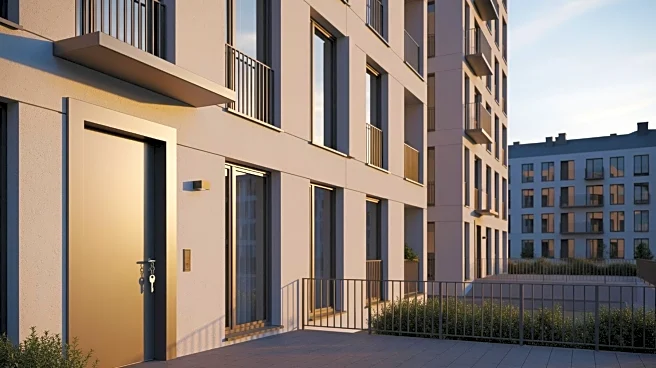What's Happening?
D.R. Horton, the largest homebuilder in the United States, has launched a new mortgage incentive program aimed at attracting buyers by offering introductory mortgage rates below 1% for qualified purchasers.
This initiative is designed to address the challenges faced by first-time homebuyers, who are currently entering the market at an average age of 40, a significant increase from previous decades. The program allows buyers to secure a 0.99% interest rate in the first year, with gradual increases in subsequent years before resetting to the market rate. This strategy is part of a broader effort by homebuilders to stimulate sales amidst high borrowing costs and a sluggish housing market.
Why It's Important?
The introduction of sub-1% mortgage rates by D.R. Horton is significant as it provides a potential solution to the affordability crisis in the housing market. By lowering the initial cost of homeownership, the program could make it easier for first-time buyers to enter the market, potentially reversing the trend of delayed home purchases. This move also reflects the broader economic pressures on the housing industry, where high mortgage rates have deterred many potential buyers. If successful, this strategy could lead to increased sales and provide a model for other builders to follow, potentially stabilizing the housing market.
What's Next?
As D.R. Horton rolls out this mortgage incentive program, it is likely that other homebuilders may adopt similar strategies to remain competitive. The effectiveness of these incentives will depend on the response from potential buyers and the overall economic conditions, including any further changes in interest rates by the Federal Reserve. Additionally, the program's success could influence future policy decisions regarding housing affordability and mortgage lending practices.
Beyond the Headlines
This initiative by D.R. Horton highlights the ongoing challenges in the U.S. housing market, particularly the barriers to entry for first-time buyers. It also underscores the creative measures that builders are willing to take to adapt to changing market conditions. The long-term impact of such programs could lead to shifts in homeownership demographics and potentially influence urban development patterns as more individuals gain access to affordable housing options.












